Today Current Affairs: 23rd September 2021 for UPSC IAS exams, State PSC exams, SSC CGL, State SSC, RRB, Railways, Banking Exam & IBPS, etc
Table of Contents
Blue Flag Certification For 2 New Beaches:

The globally recognized and the coveted International eco-label “Blue Flag”, has accorded the Blue Flag Certification for 2 new beaches this year –Kovalam in Tamil Nadu and Eden in Puducherry beaches.
- Foundation for Environment Education in Denmark (FEE) which accords the globally recognized eco-label – Blue Flag certification, has also given re-certification for 8 nominated beaches Shivrajpur-Gujarat, Ghoghla-Diu, Kasarkod and Padubidri-Karnataka, Kappad-Kerala, Rushikonda- Andhra Pradesh, Golden-Odisha and Radhanagar- Andaman and Nicobar, which were awarded the Blue Flag certificate last year.
- The Ministry of Environment embarked upon a highly acclaimed & flagship program Beach Environment & Aesthetics Management Services (BEAMS).
- BEAMS is one of the initiatives under ICZM approach that the MoEF&CC has undertaken for the sustainable development of coastal regions of India, with a prime objective to protect and conserve the pristine coastal and marine ecosystems through holistic management of the resources.
- This was aimed for achieving the globally recognized and the coveted International eco-label “Blue Flag” , accorded by International Jury comprising of members from IUCN, UNWTO ,UNEP, UNESCO etc.
- FEE Denmark conduct regular monitoring & audits for strict compliance of the 33 criteria at all times. A waving “Blue Flag” is an indication of 100% compliance to these 33 stringent criteria and sound health of the beach.
- The objective of BEAMS program is to abate pollution in coastal waters, promote sustainable development of beach facilities, protect & conserve coastal ecosystems & natural resources, and seriously challenge local authorities & stakeholders to strive and maintain high standards of cleanliness, hygiene & safety for beachgoers.
National Curriculum Framework (NCF):

The Centre has started the process to revise school textbooks by appointing former Indian Space Research Organisation (ISRO) chairman K. Kasturirangan as the head of a 12-member steering committee responsible for developing a new National Curriculum Framework (NCF).
- Kasturirangan also chaired the drafting committee for the National Education Policy, 2020 which recommended the development of a new NCF. The steering committee has been given a tenure of three years to complete its task, said an Education Ministry statement.
- The last such framework was developed in 2005. It is meant to be a guiding document for the development of textbooks, syllabi and teaching practices in schools across the country.
- The subsequent revision of textbooks by the National Council of Educational Research and Training will draw from the new NCF.
- In fact, the steering committee will develop four such frameworks, one each to guide the curriculum of school education, teacher education, early childhood education and adult education.
National Conference On Accessible Elections 2021:

The Election Commission of India organised a virtual National Conference on Accessible Elections 2021 with the objective to assess the present accessibility policies and discuss strategies for addressing barriers to enhance participation in electoral process for voters with disabilities.
- It was informed that about 77.4 lakhs PwDs are registered voters.
- During the conference, Chief Election Commissioner Shri Sushil Chandra along with the Election Commissioners Shri Rajiv Kumar & Shri Anup Chandra Pandey released the following;
- Crossing the Barriers- Accessibility Initiatives 2021. The Booklet is a compilation of innovative practices & accessibility initiatives for facilitating and empowering PwD electors.
- Braille Language versions of recently launched initiatives like Voter Guide, Letter to the new voter, and a Song Booklet of 50 motivational songs on voter awareness.
- Sign Language versions of two awareness videos of Voter helpline app and EVM-VVPAT
- An evaluation study of Outcomes of SVEEP Activities and Facilities provided to PwDs in General Assembly Election 2018 & Lok Sabha Elections 2019 in Karnataka was also released by the Commission.
Har Ghar Nal Ka Jal Scheme:
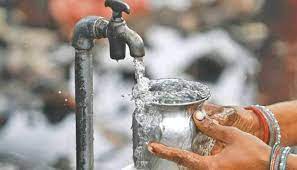
Officially launched in September 2016, Bihar’s Har Ghar Nal Ka Jal (tap water in every home) scheme has so far provided drinking water to 152.16 lakh tap connections.
- This is separate from the 8.44 lakh connections provided under the Central Government’s Jal Jeevan Mission and 2.32 lakh connections through the National Rural Drinking Water Programme.
- Essentially, Har Ghar Nal Ka Jal is a cluster of four state schemes under various categories that were launched to provide clean drinking water through taps in urban and rural homes.
- The common goal: easy access to clean drinking water with the larger aim of improving public health across the board.
- Under the scheme, drinking water is supplied for two hours each in the morning, afternoon and evening.
- And to implement this, work is allotted to contractors by the Public Health Engineering Department (PHED), and Panchayati Raj and Urban Development departments, through Standard Bidding Documents (SBDs).
Shankhalipi Inscriptions On The stairs On An Ancient Temple:
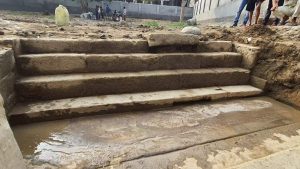
Archeologists have found ‘shankhalipi’ inscriptions on the stairs on an ancient temple dating back to the Gupta period in Uttar Pradesh’s Etah district.
- The inscriptions mention ‘Sri Mahendraditya’, the title of Kumaragupta I of the Gupta dynasty.
- Two decorative pillars close to one another, with human figurines have been discovered at Bilsarh site. The discovery becomes significant since only two other structural temples from the Gupta age have been found so far — Dashavatara Temple (Deogarh) and Bhitargaon Temple (Kanpur Dehat).
About the Shankhalipi script:
- Shankhalipi or “shell-script” describe ornate spiral characters assumed to be Brahmi derivatives that look like conch shells or shankhas.
- They are found in inscriptions across north-central India and date to between the 4th and 8th centuries.
- The inscriptions consist of a small number of characters, suggesting that the shell inscriptions are names or auspicious symbols or a combination of the two.
- The script was discovered in 1836 on a brass trident in Uttarakhand’s Barahat by English scholar James Prinsep, who was the founding editor of the Journal of the Asiatic Society of Bengal.
Fortified Rice Kernels (FRK):
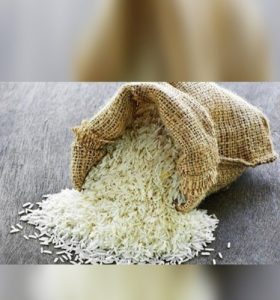
Centre government, for the first time issued uniform specifications for Fortified Rice Kernels (FRK) for grade A & Common Rice. The specifications have been issued by the Ministry of Consumer Affairs, Food and Public Distribution.
- The fortified rice is to be distributed under various government schemes, including the public distribution system (PDS) and midday meals in schools, by 2024.
Rice fortification:
- The country has high levels of malnutrition among women and children.
- According to the Food Ministry, every second woman in the country is anaemic and every third child is stunted.
- India ranks 94 out of 107 countries and is in the ‘serious hunger’ category on the Global Hunger Index (GHI).
- Malnutrition and lack of essential nutrients in poor women and poor children poses major obstacles in their development.
- Food fortification is defined as the practice of adding vitamins and minerals to commonly consumed foods during processing to increase their nutritional value.
- It is a proven, safe and cost-effective strategy for improving diets and for the prevention and control of micronutrient deficiencies.
- The Food Safety and Standards Authority of India (FSSAI), defines fortification as “deliberately increasing the content of essential micronutrients in a food so as to improve the nutritional quality of food and to provide public health benefit with minimal risk to health”.
- According to the Food Ministry, fortification of rice is a cost-effective and complementary strategy to increase vitamin and mineral content in diets.
- According to FSSAI norms, 1 kg fortified rice will contain iron (28 mg-42.5 mg), folic acid (75-125 microgram) and Vitamin B-12 (0.75-1.25 microgram).
- In addition, rice may also be fortified with micronutrients, singly or in combination, with zinc (10 mg-15 mg), Vitamin A (500-750 microgram RE), Vitamin B1 (1 mg-1.5 mg), Vitamin B2 (1.25 mg-1.75 mg), Vitamin B3 (12.5 mg-20 mg) and Vitamin B6 (1.5 mg-2.5 mg) per kg.
- Since the nutrients are added to staple foods that are widely consumed, this is an excellent method to improve the health of a large section of the population, all at once.
- Fortification is a safe method of improving nutrition among people. The addition of micronutrients to food does not pose a health risk to people.
- It does not require any changes in food habits and patterns of people. It is a socio-culturally acceptable way to deliver nutrients to people.
- It does not alter the characteristics of the food—the taste, the feel, the look.
- It can be implemented quickly as well as show results in improvement of health in a relatively short period of time.
- This method is cost-effective especially if advantage is taken of the existing technology and delivery platforms.
Havana Syndrome:

A US intelligence officer travelling with CIA director William Burns has reported symptoms of Havana Syndrome while the two were in India earlier this month.
- This is the first instance of the phenomenon being reported in India, at least on record, and could have diplomatic implications.
Havana Syndrome:
- Havana Syndrome refers to a set of mental health symptoms that are said to be experienced by US intelligence and embassy officials in various countries.
- It typically involves symptoms such as hearing certain sounds without any outside noise being present, nausea, vertigo and headaches, memory loss and issues with balance.
- As the name suggests, it traces its roots to Cuba.
- Back in 2016, reports first emerged of US diplomats and other employees of the government falling ill in Havana, the capital of Cuba.
- The patients said they heard strange sounds and experienced odd physical sensations in their hotel rooms or homes, and had symptoms of nausea, severe headaches, fatigue, dizziness, sleep problems and hearing loss.
- This mysterious illness came to be called the “Havana Syndrome”.
New Rules For Ammonium Nitrate:

The Government has amended the rules for Ammonium Nitrate to curb its pilferage, introduce fire-fighting provisions as well as improve ways to handle and store the chemical.
- These rules have been amended from the lesson learnt from the Beirut Explosion in 2020. Nearly 3,000 tons of ammonium nitrate was stored at Beirut’s port for six years that detonated in 2020, wreaking death and destruction.
- The rules require that ammonium nitrate received at ports be transferred to storage houses 500 metres beyond the port area.
- The rules also permit the auction of seized lots of ammonium nitrate to ensure safe and speedy disposal besides requiring that Ammonium Nitrate be imported in bagged form only.
- The amendments include provision for adequate fire-fighting facilities in storage and handling areas, improvement of flooring in storage and handling areas.
- This will reduce the handling of loose chemicals at port and therefore enhance safety.
About Ammonium Nitrate:
- Ammonium Nitrate (NH4NO3) is a nitrogen-rich white, crystalline chemical which is soluble in water.
- It is a common chemical ingredient of agricultural fertilisers.
- It is used as an ingredient for the production of anaesthetic gases and cold packs.
- It is also the main ingredient in the manufacture of commercial explosives used in mining and construction.
- It is the main component of the explosive composition known as ANFO- Ammonium Nitrate Fuel Oil.
- Pure ammonium nitrate is not an explosive on its own. For Ammonium nitrate to be explosive, a primary explosive or detonator like RDX or TNT is required.
- Many Improvised Explosive Devices (IEDs) used by terrorists around the world have ANFO as the main explosive.
- Stored ammonium nitrate is a fire hazard and can explode in two ways.
- It may come in contact with some explosive mixture.
- Due to the oxidation process at large scale, heat may be generated starting a fire and then explosion. This seems to be the primary likely cause of the incident at Beirut port.
Aroma Mission:
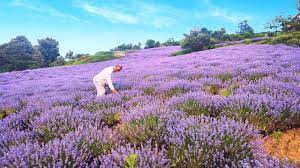
The Union Minister of State Science & Technology has proposed Integrated Aroma Dairy Entrepreneurship for Jammu & Kashmir to augment the income of farmers.
- The Aroma Mission, also popularly referred as “Lavender or Purple Revolution”, has started from J&K and transformed the lives of farmers who are able to grow lavender, make lucrative profit and improve their lives.
- Earlier, the floriculture mission was launched in 21 States and Union Territories.
Aroma Mission:
Objectives:
- To promote the cultivation of aromatic crops for essential oils that are in great demand by the aroma industry.
- To enable Indian farmers and the aroma industry to become global leaders in the production and export of some other essential oils on the pattern of menthol mint.
- To provide substantial benefits to the farmers in achieving higher profits, utilization of waste lands and protection of their crops from wild and grazing animals.
Nodal Agencies:
- The nodal laboratory is CSIR-Central Institute of Medicinal and Aromatic Plants (CSIR-CIMAP), Lucknow.
- The participating laboratories are CSIR-Institute of Himalayan Bioresource Technology (CSIR-IHBT), Palampur; CSIR-Indian Institute of Integrative Medicine (CSIR-IIIM), Jammu etc.
Coverage:
- The scientific interventions made under the mission project provided assured benefits to the growers of Vidarbha, Bundelkhand, Gujarat, Marathwada, Rajasthan, Andhra Pradesh, Odisha and other states where farmers are exposed to frequent episodes of weather extremes and account for maximum suicides.
- Aromatic Plants include lavender, damask rose, mushk bala, etc.
Launch of Second Phase:
- CSIR-IIIM-Jammu announced Aroma Mission phase-II in February, 2021 after the success of the first phase.
- It focuses on setting up of cooperatives for marketing, promotion of cultivation and processing of high value medicinal and aromatic plants (MAPs), development of superior varieties and their agro technologies, setting up of distillation units and processing facilities, skill and entrepreneurship development, value-addition and product development from MAPs.
45th GST Council Meeting:
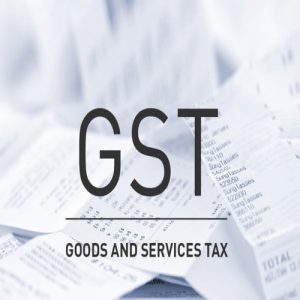
The 45th Goods and Services Tax (GST) Council meeting was held.
Extension of Concessional GST Rates:
- The Council decided to extend the GST relief on several drugs related to Covid-19 treatment till December 2021.
Food Delivery Apps to Collect GST:
- Online food delivery aggregator firms such as Swiggy and Zomato will now be liable to pay GST and not the restaurant partners.
- Currently, online bills generated by food aggregators already have a tax component in it.
- The taxed amount is paid back to the restaurant partners who are then expected to pay this amount to the government.
Petrol and Diesel will not come under GST Regime:
- The council has decided not to bring petrol and diesel under the GST regime. States vehemently opposed the inclusion of the fuels while raising concerns on revenue buoyancy during the meet.
- If petrol and diesel come under the GST regime, prices will become mostly uniform across all states as the different excise and VAT rates that the Centre and the states impose would then be done away with.
- This would help bring down diesel and petrol prices greatly, which has touched new highs in the recent past.
GST on Fortified Rice Reduced:
- The GST rate on fortified rice kernels for schemes like integrated child development schemes has been recommended to be reduced from 18% to 5%.
World Rhino Day:

World Rhino Day is observed on 22th September to spread awareness for all five species of rhino and work being done to save them.
- It was first announced by the World Wildlife Fund (WWF) – South Africa in 2010. The species of rhinoceros are on the verge of extinction due to persistent poaching and habitat loss over several decades.
- There are five species of rhino – white and black rhinos in Africa, and the greater one-horned, Javan and Sumatran rhino species in Asia.
IUCN Red List Status:
- White Rhino: Near Threatened.
- Black Rhino: Critically endangered.
- Greater One Horned: Vulnerable.
- Javan: Critically Endangered
- Sumatran Rhino: Critically Endangered
Theme 2021: Keep the five Alive.
Objectives: Strengthening protection, Expanding the distribution range, Research and monitoring, Adequate and sustained funding.
National Snakebite Awareness Summit:

National Snakebite Awareness Summit was recently organised in virtual mode by the Integrated Health and Wellbeing Council, New Delhi.
- The summit was held on the eve of the International Snakebite Awareness Day, observed on 19 September every year.
- India is registering an alarming number of deaths due to snakebite. Most of the deaths are preventable with greater awareness and accessible healthcare.
- There is no mechanism of management in the peripheral system to treat snakebites – doctors and paramedical staff need to learn snakebite management but there are no modules.
- Establishment of a dialysis centre attached to the PHCs to offer immediate treatment to those with renal failure due to snakebite.
- Region-specific treatment protocols to treat snakebite victims and to administer the anti-venom injection, when required.
- Besides, we need to include tribal healers who have the knowledge of traditional medicine and medicinal plants.
- Snakebite should be a notifiable disease and industry can bring in easy solutions but we need help from policymakers in doing that.
- Need more localized surveys as preventing snakebite will bring equity – most affected people include children working with parents on fields, villagers and tribals.




